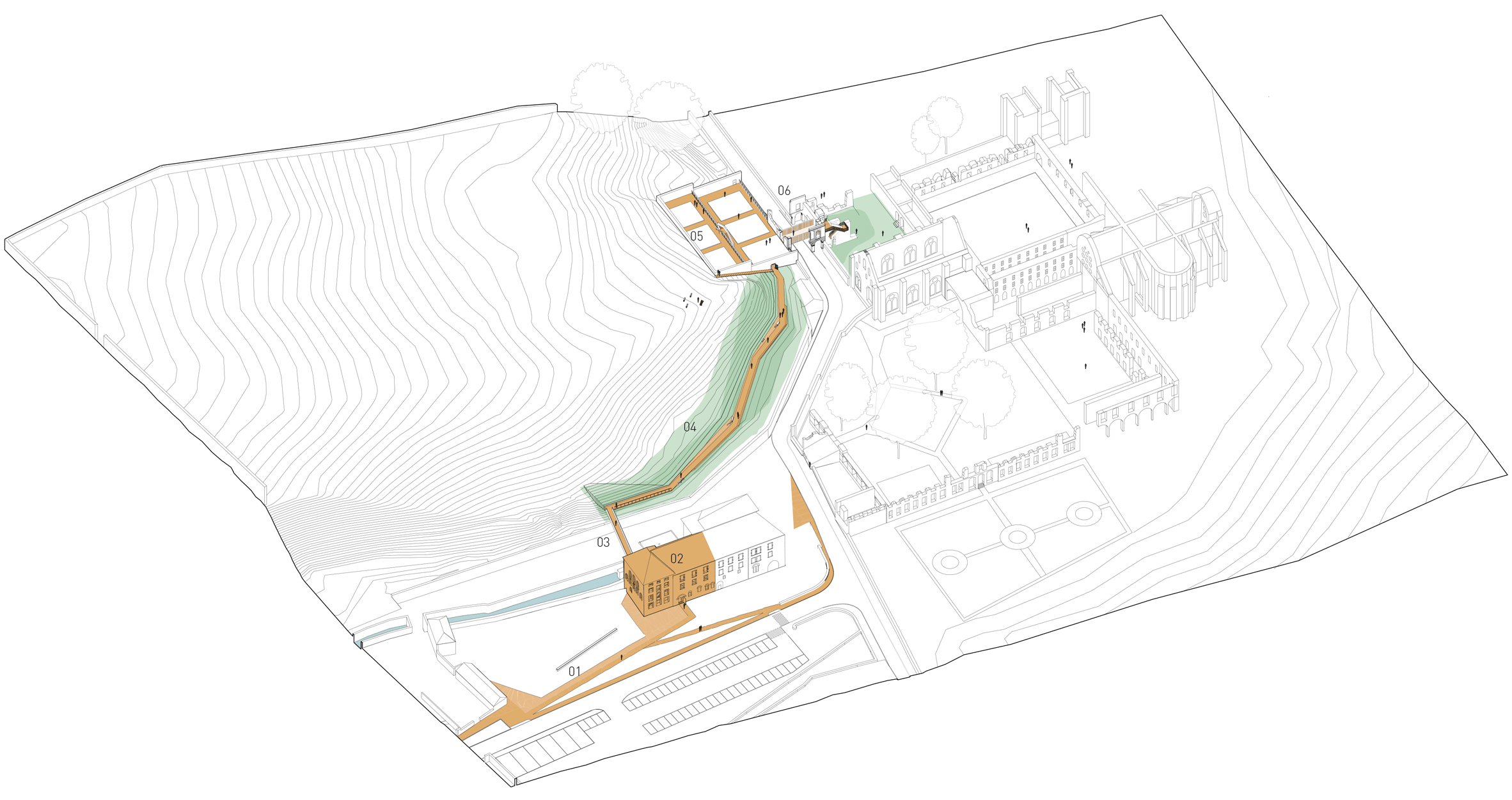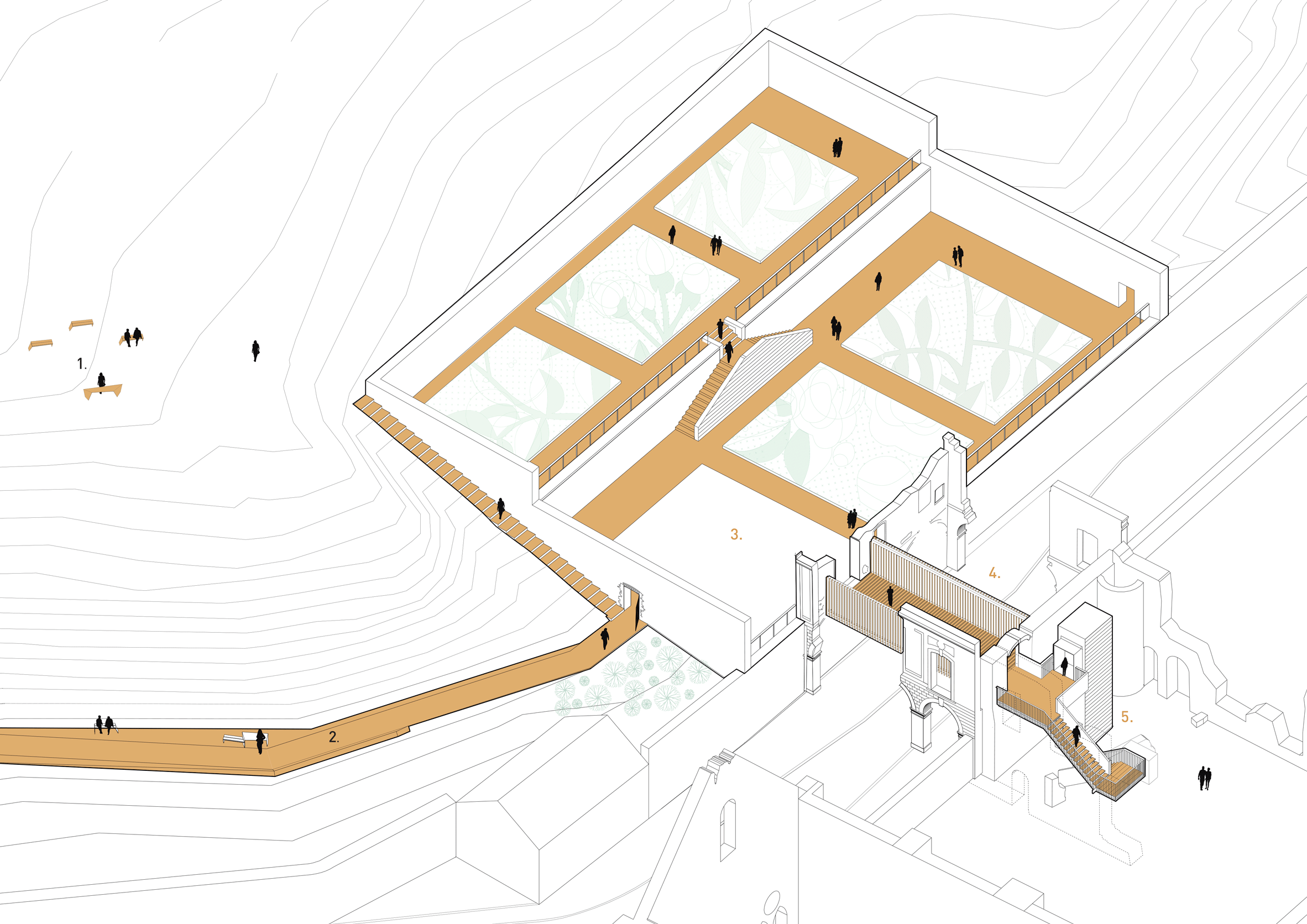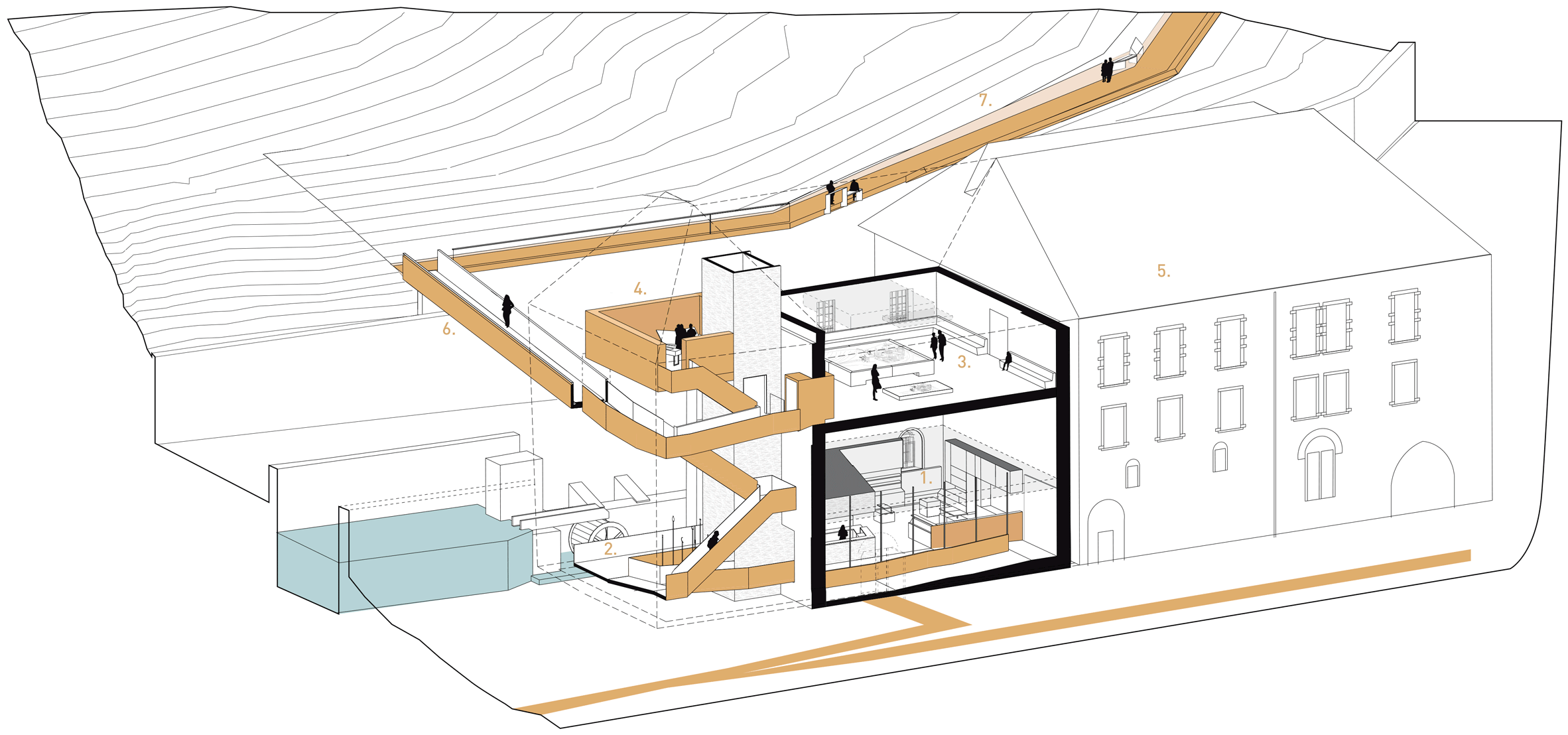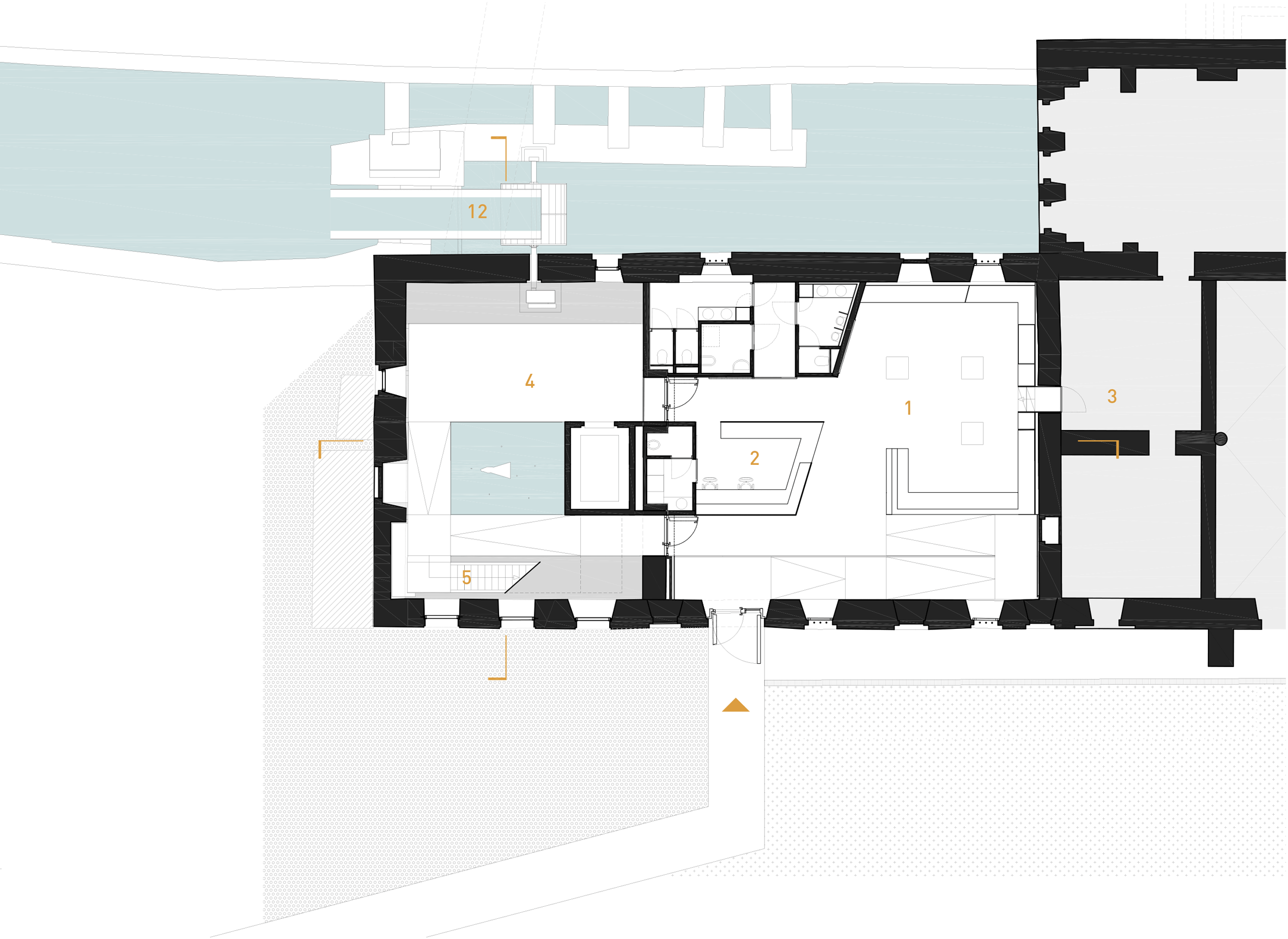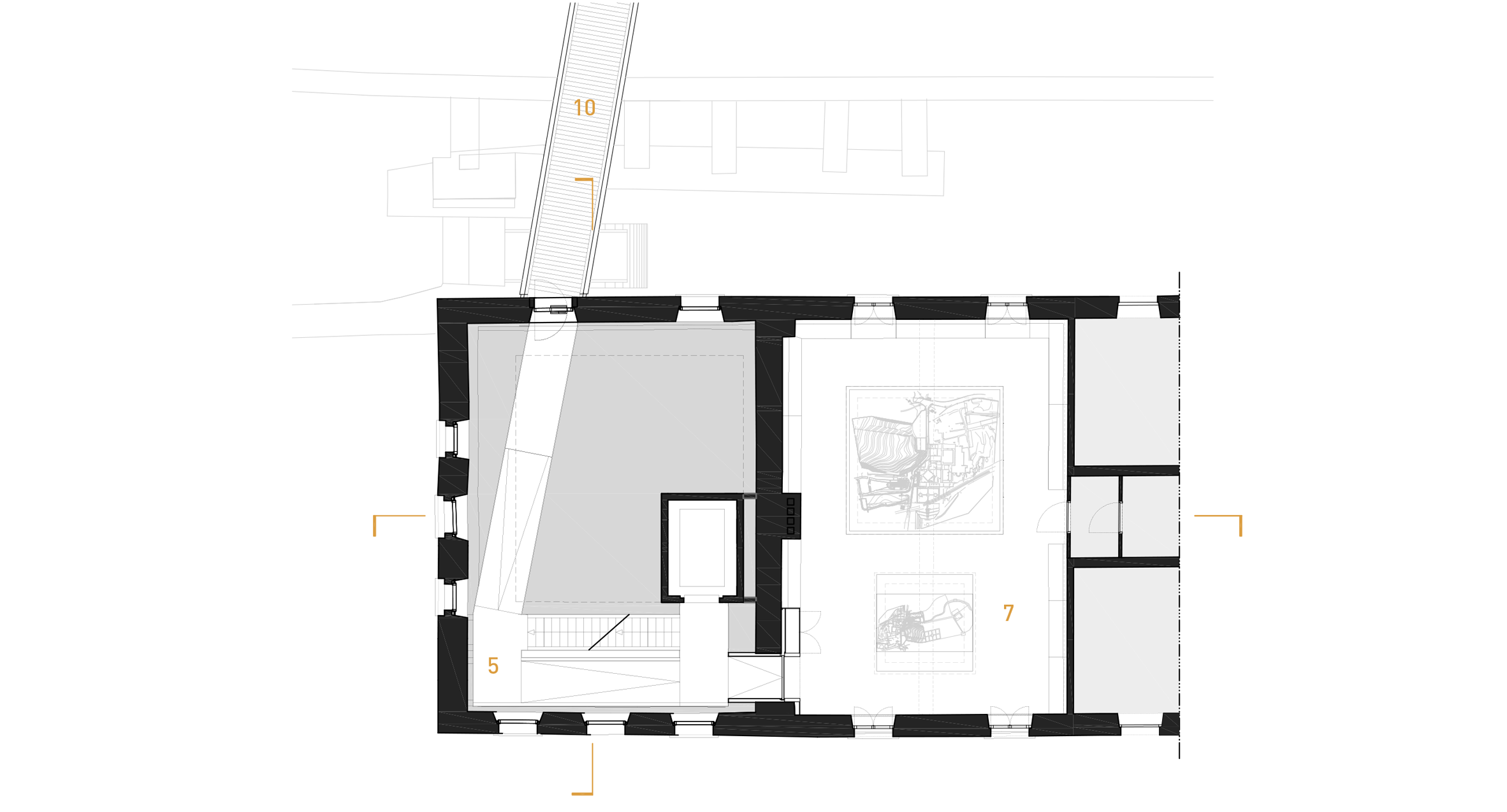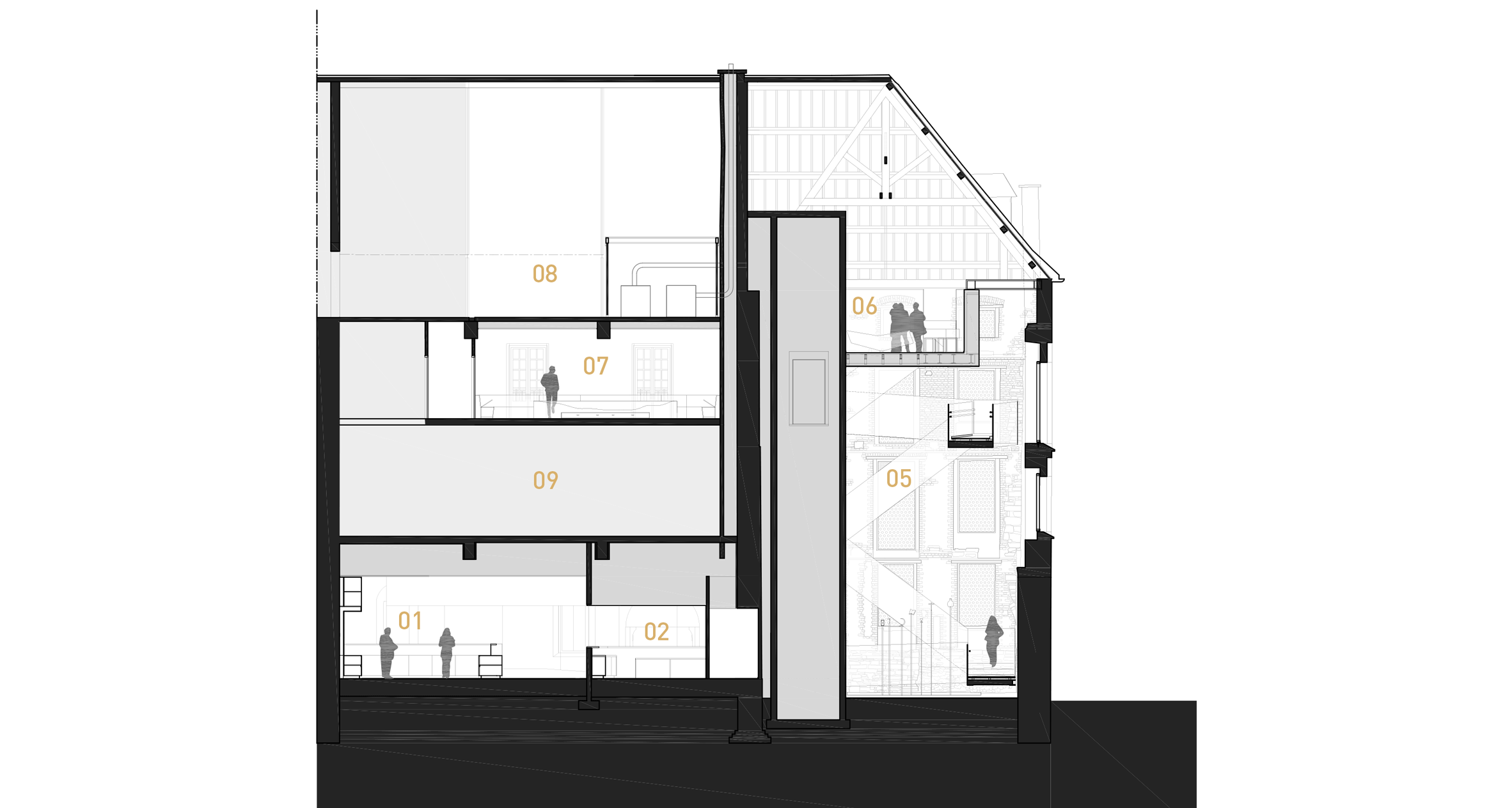Elevated walkway and visitor centre added to 12th-century abbey ruins by Binario Architectes
Binario Architectes has used Corten steel, concrete and wood to create a series of new additions to the Villers Abbey in Belgium, including a visitor centre and an elevated pathway (+ slideshow).
The Belgian studio converted a former watermill to create the Abbey Visitor Centre in the town Villers-la-ville.
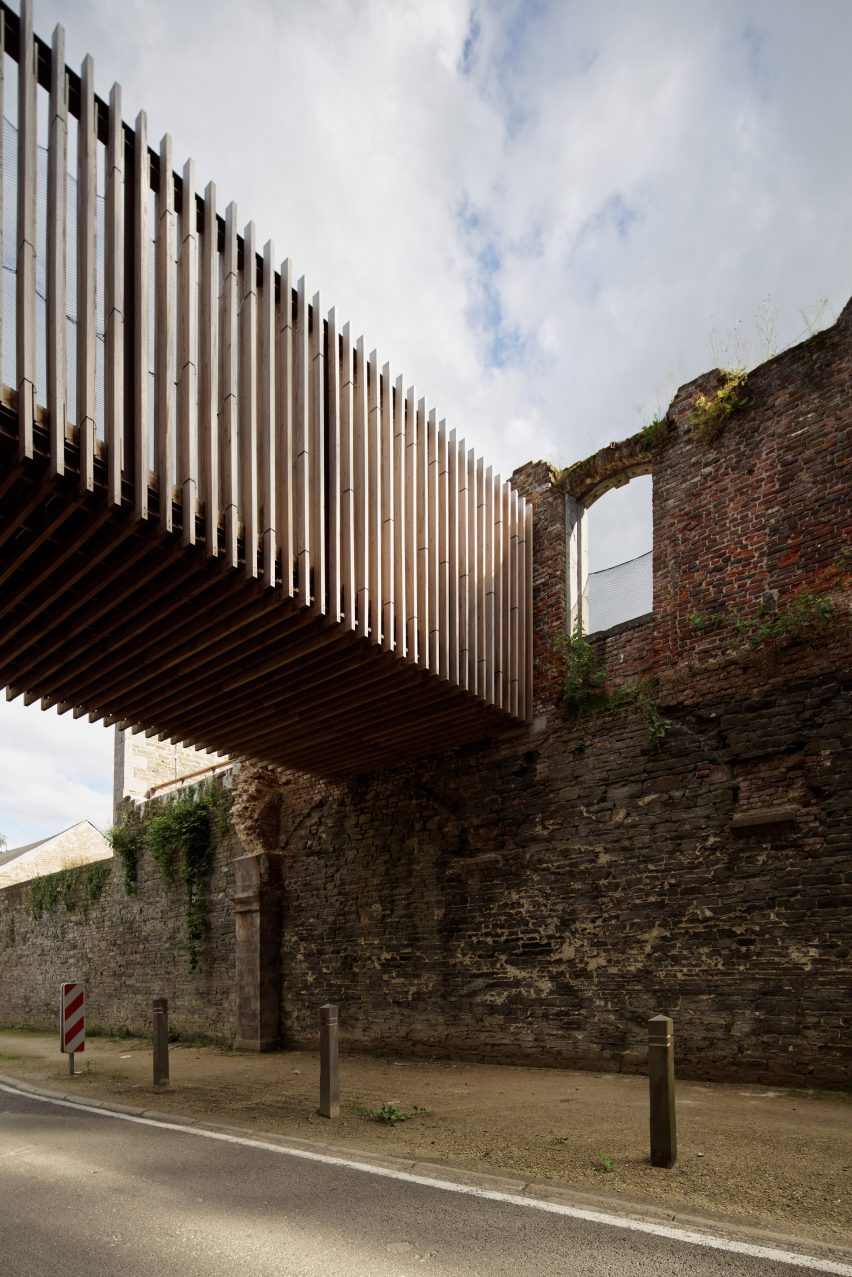
Said to be the largest abbey ruins in Europe, Villers Abbey covers a 36-hectare-site.
So the architects added a pathway to link the visitor centre to all areas of the site, including the ruins, a garden and a lookout point.
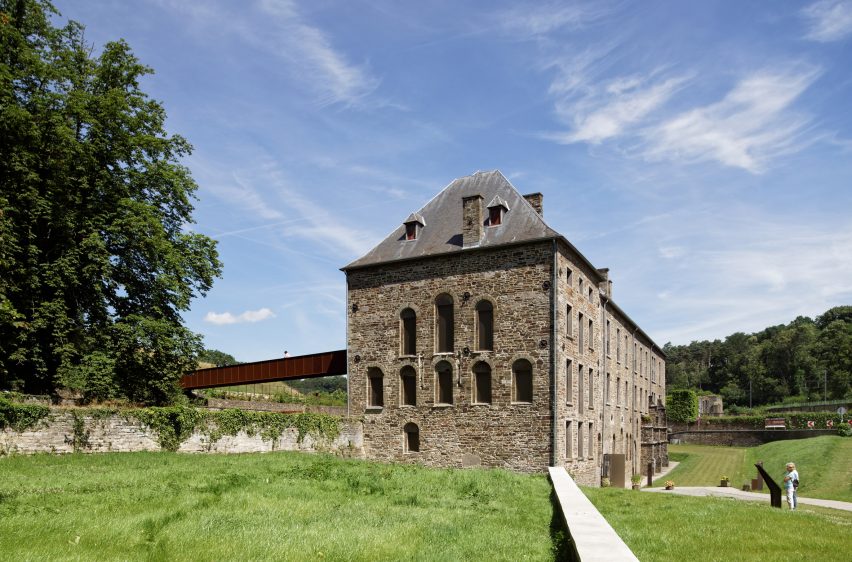
Both the outdoor walkway and a new staircase inside the visitor centre feature a simple material palette of concrete, wood and pre-rusted steel, used in various combinations.
The materials are intended to create a strong visual link across the site, while also remaining sensitive to the historic structure.
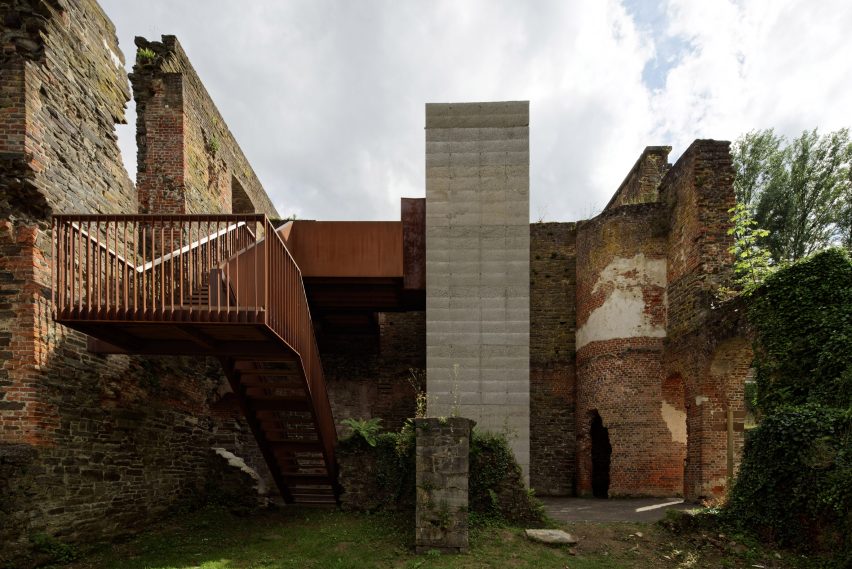
"The range of new materials was chosen in order to strengthen the unity of architectural, landscape and scenographic interventions in the full site," said the architects.
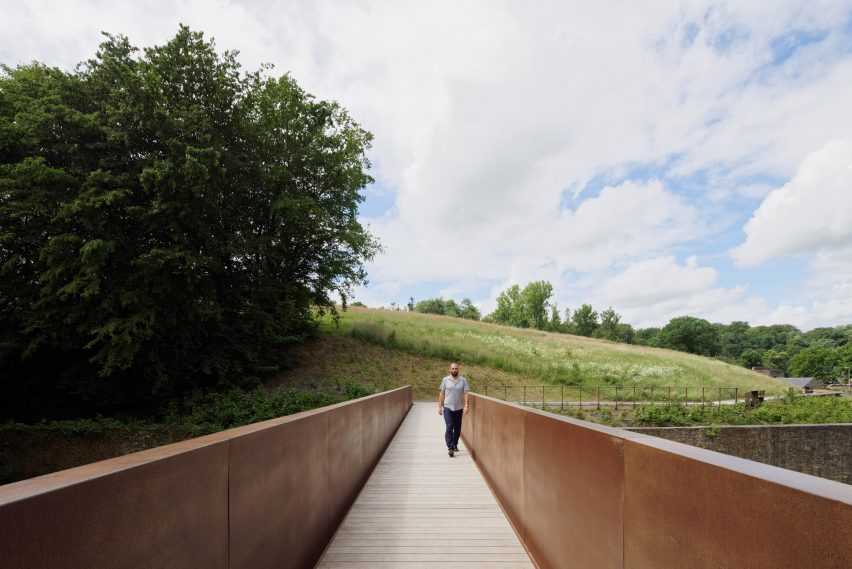
"The limited and sober selection, setup in various ways, offers a strong expression: Corten steel, exposed aggregate concrete, board formed concrete, earth formed concrete, solid wood indoor and outdoor footbridges," they added.
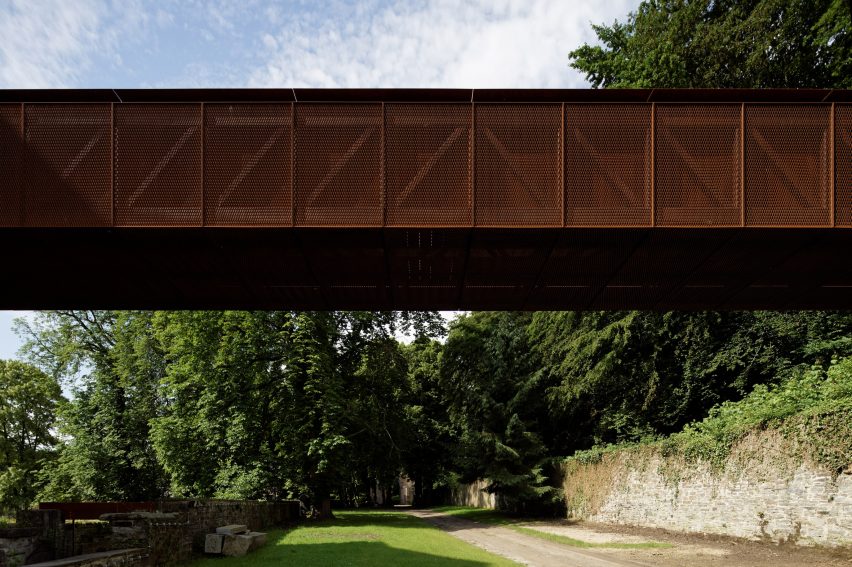
The new pathway features a footbridge with a steel balustrade that connects the visitor centre to the hill.
The bridge leads to a pathway that carves its way up the hill. It features rusted steel floor panels with dates recording the history of the abbey.
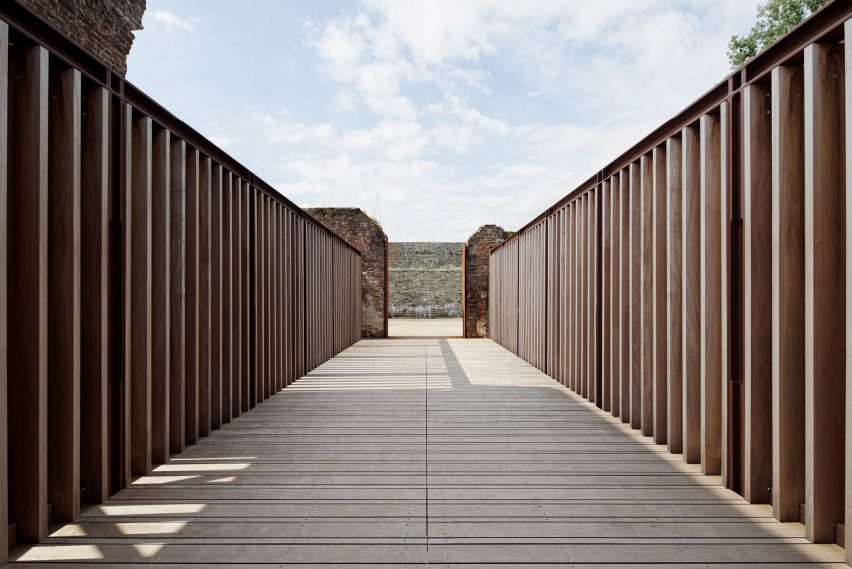
The walkway takes visitors to a garden at the top of the hill. Here, a second footbridge lined with wooden boards crosses over a main road that split the site in two and leads down into the ruins.
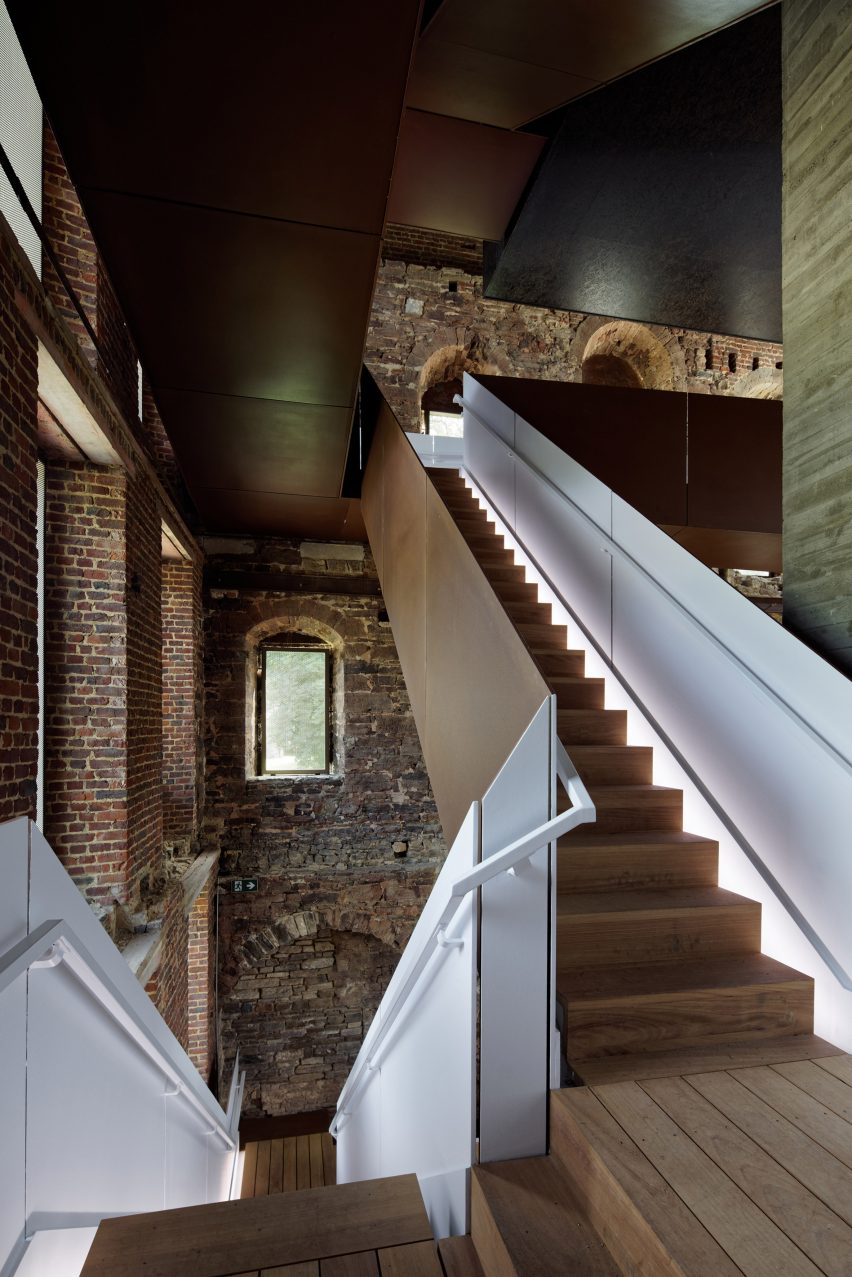
Inside the visitor centre, a staircase with a red steel handrail and wooden treads acts as a continuation of the route.
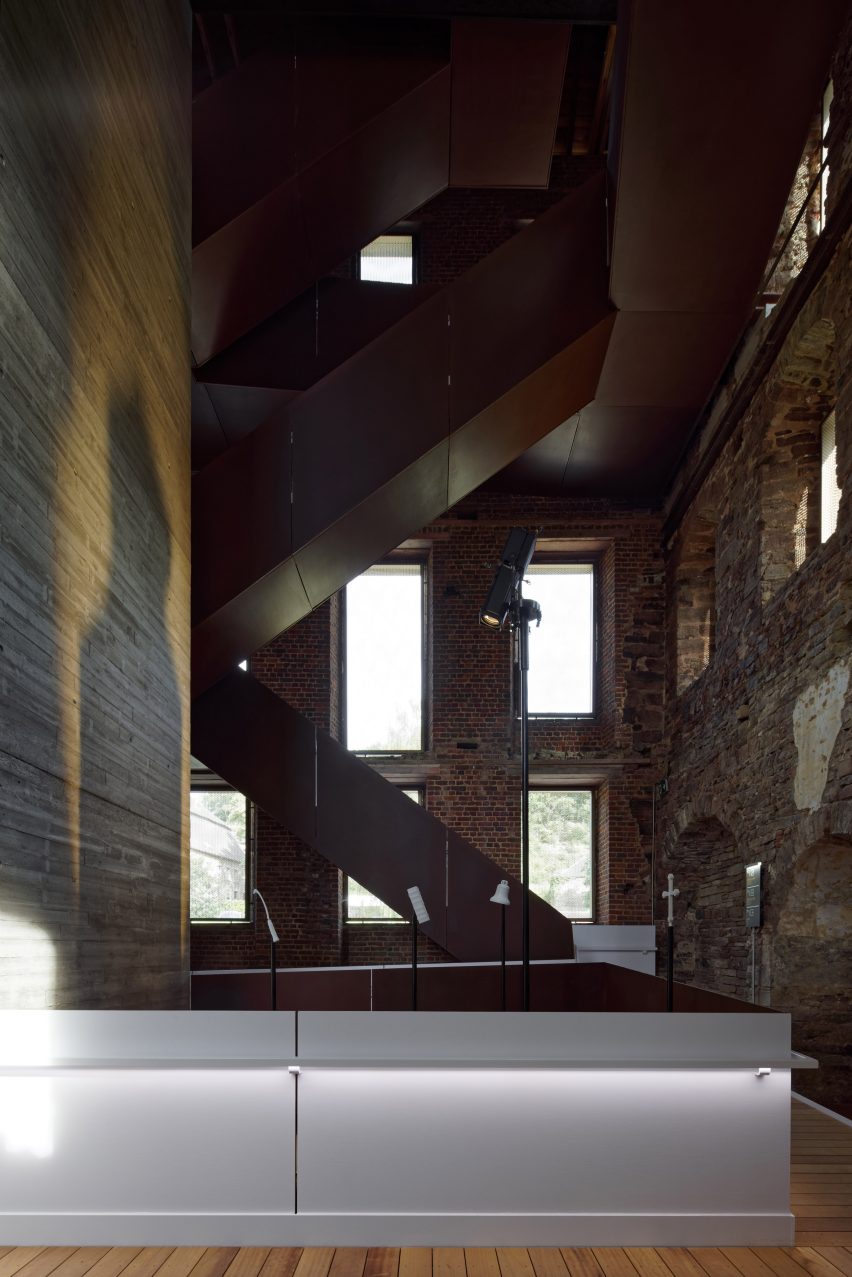
The ground floor has a shop and reception area, framed with board-marked concrete panels, while the the first floor features a large model of the abbey and a media room.

These materials are intended to complement the exposed brick walls and wooden roof beams of the former watermill.
New bay windows inside the watermill also feature a perforated aluminium screen that filters and reflects light.
